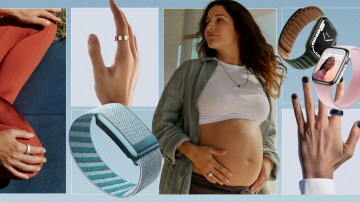The story was originally published on Glossy’s sibling publication Digiday.
Holiday shopping (and thus, holiday marketing campaigns) seem to begin earlier every year. But for many content creators, the annual Q4 brand deals this year are increasingly coming together at the eleventh hour. More often than not, deals are struck less than 30 days out from a campaign live date as opposed to the traditional 30 to 60 days, according to two creators Digiday spoke with for this piece.
Given this year’s tariffs, economic headwinds and uncertainty around TikTok’s future, brands are likely sitting on their remaining budgets until the last possible moment, said Haley Schluter, head of North America for Buttermilk influencer agency. Creators are consequently seeing a range of activity, from a steady flow of deals to a slowdown.
“I can confidently say that there is a decrease in active partnerships, more hesitancy with spending, and we’re seeing a little bit of tightening of budgets,” said Trevor Barrett, a full-time beauty content creator based in Pennsylvania. Barrett, who goes by @trevorbarrett on social media, has more than 3 million followers across TikTok and Instagram.
Before Q4 closes out this year, Barrett is hoping to land between six to 10 brand deals for the October through December holiday season. However, that goal hasn’t changed since 2023, when the creator inked deals with brands like Fenty Beauty, e.l.f. Cosmetics, Maybelline, CeraVe and Estée Lauder — even though Barrett’s “current audience engagement is honestly at an all time high for the year,” he said. (Barrett did not provide specific engagement figures.)
Kyshawn Lane, a part-time creator based in New Jersey who goes by @weeklyhomecheck on social platform, has had a similar experience. Lane, whose content focuses on home improvement, is currently expecting only one to two deals compared to five to six at this time last year, he said. And the deals with partners in the insurance, home improvement, and household essentials categories have been last-minute, he added.
“I’m just assuming brands are trying to figure out exactly what budget they have and where to spend it,” he said, “and not only where to spend it, but how to spend it as well.”
Last-minute brand deals aren’t a new phenomenon. However, economic uncertainty has loomed high this year, adding a layer of complexity. In response, marketers have been hesitant to commit too much, too early, and are instead opting for more fluid deals. Even as global ad spend this year is expected to grow this year, reaching $1.17 trillion, according to WARC’s recent forecasting.
Influencer marketing, Schluter added, isn’t immune to the effects — especially given CMOs’ appetites for more granular level measurement to justify ad spend in an increasingly expensive digital landscape.
“In Q4, we see that CPMs rise on your paid media,” Schluter said. “Influencer media kits, their fees are ballooning by 20, 30%. So you have to make difficult decisions.”
That’s not to say the creator economy is expected to shrink anytime soon. In fact, influencer marketing spend will surpass $10 billion in the U.S. this year, according to eMarketer’s influencer forecast. That’s one year earlier than previously predicted.
But brand marketers want those dollars to work harder and are increasingly pushing for things like syndication, or cross-posting across short form content platforms like TikTok and Instagram. At least two creators Digiday spoke with for this piece said brands frequently push for loose usage rights — that would allow advertisers more control over how content is used and for how long — which creators have been charging more for.
“It’s encouraging to see brands being more transparent about ownership and usage, but it’s also made it more important to review contracts carefully and ensure the terms align with fair compensation,” Sabrina Morales, said in an email to Digiday. Morales has more than 16,000 followers across TikTok and Instagram, and has worked with brands like Fenty Beauty, PepperMayo and Hempz.
As TikTok’s future hangs in limbo, brands are prioritizing platforms like Instagram given “brands prefer to have a better handle on how much viewership they can expect,” said Nicole Phillip, a travel creator who goes by @ncolphillip on social and has more than 300,000 followers.
Despite the delays and tighter budgets, influencer marketing remains a line item for many this holiday season. The wrapping just looks different as the industry navigates performance, usage rights, and cross-platform value, which are being scrutinized more closely than ever.
“There’s just so much behind the scenes that we have to take into consideration,” said Schluter. “Influencer has started to become a channel that there’s a little bit of trepidation around.”




